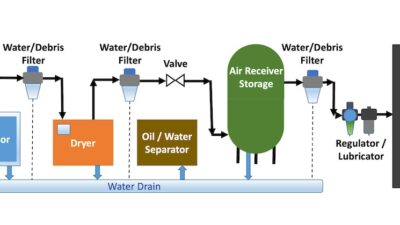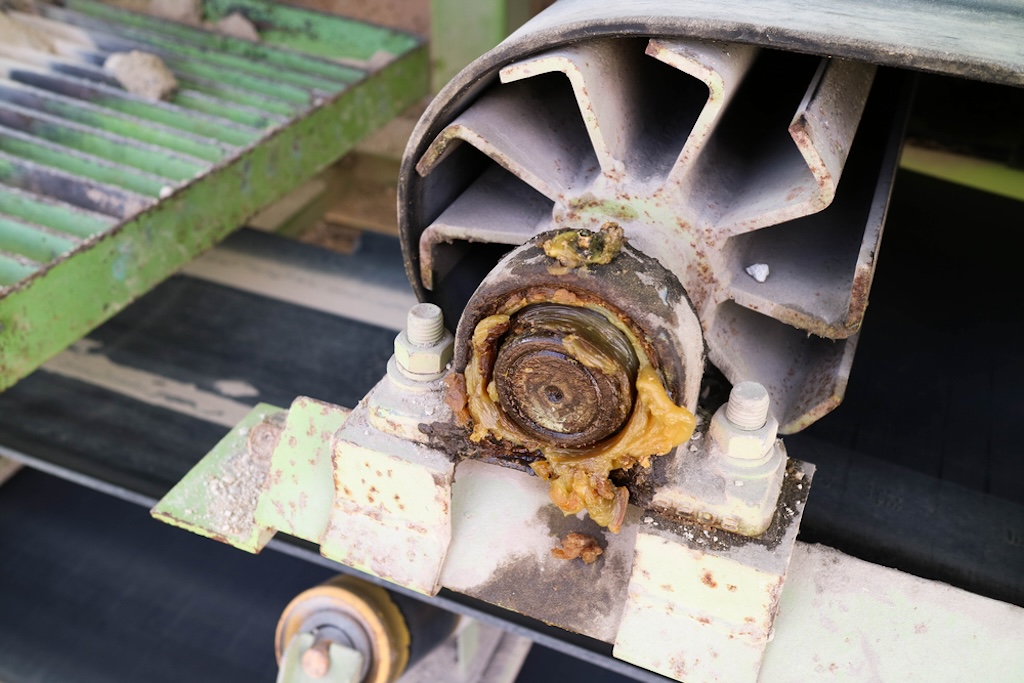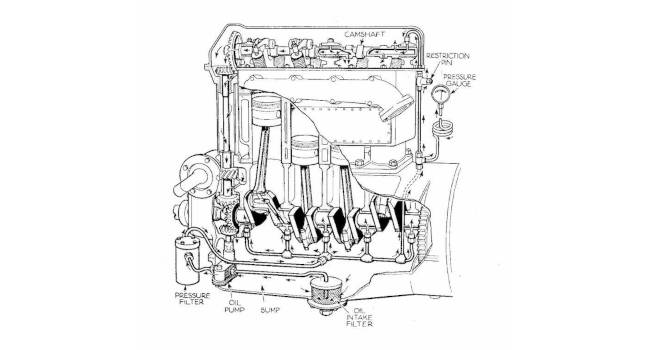While no technology can prevent normal equipment wear or the need for maintenance, Predictive Analytics and the latest advances in Predictive Diagnostics now are helping plants to overcome their challenges by detecting impending problems early and allowing plants to take control of their operations.

Veteran plant operators can attest to the race between data intelligence and equipment failure. Despite sizable investments in instrumentation, sophisticated OEM devices, sensors and software, many plants contend daily with data overload and a lack of actionable intelligence to prevent surprises. They’re fixing what is about to break, but also fixing what’s not. They’re not fixing what’s not broken, but also not fixing what is.
Without adequate direction, they can’t prioritize and optimize their Lean resources, and they can’t avoid surprise equipment failures.
While no technology can prevent normal equipment wear or the need for maintenance, Predictive Analytics and the latest advances in Predictive Diagnostics now are helping plants to overcome their challenges by detecting impending problems early and allowing plants to take control of their operations.
Predictive Analytics sets the pace
History has been referred to as the science of chronicling that which never happens twice. Likewise, every piece of equipment is unique and operates unlike all others – thus the surprise factor. Even presumably identical pieces of equipment were manufactured on different days under different circumstances, possess different operating characteristics, have different maintenance histories and have been working under different ambient conditions, loads and operating contexts.
Ultimately, human analysts are tasked with deciphering mounds of data for all these unique pieces of equipment to infer equipment health and condition. When it comes to plant equipment, there’s no such thing as a welcome surprise. One error in judgment call can result in an equipment failure sufficient to reduce or halt production. In some cases, a catastrophic event can rack up seven-figure losses.
Predictive Analytics provides early and actionable real-time warnings of impending equipment and process problems that otherwise would have gone undetected.
These warnings enable operators to fix what needs to be fixed but not fix what doesn’t. They allow plants to move from reactive and time-based maintenance to proactive and predictive maintenance. Plants, therefore, improve their availability and reliability, increase efficiency and reduce maintenance costs. Typically, the cost of getting ahead of a problem is 30% to 80% less with predictive technologies than without.
Predictive Analytics works by understanding that every piece of equipment is unique. It develops the unique set of fingerprints for each individual piece of equipment across all known loads, ambient conditions and operating contexts. It calculates the proper operational relationships among all relevant parameters, such as loads, temperatures, pressures, vibration readings, ambient conditions and more. It then takes actual real-time sensor readings and compares them to that particular machine’s normal fingerprints.
Based upon the differences between real time and normal, along with their persistence, Predictive Analytics detects and isolates abnormal behavior, in the context of operating conditions. It then posts these incidents and provides exception-based notifications of developing problems to users. It does this automatically, continuously and relentlessly, 24 hours a day.
Said differently, Predictive Analytics can determine that, even though a temperature reading is in the middle of the minimum/maximum range, the sensor value is abnormal for a particular piece of equipment in the context of its unique operating conditions.
Instead of plant personnel sorting through vast amounts of data to extract meaningful nuggets, Predictive Analytics operates on a real-time push model, identifying and flagging these subtle changes from expected behavior that have been verified to be actionable issues. Doing so, it identifies sensor, equipment and operational issues, and sometimes can identify issues weeks and months before failure. With these early warnings, operators can schedule appropriate maintenance or plan further investigation in context of the overall plant schedule. Hence, they avoid surprise equipment failures.
Predictive Analytic technology is scalable to all critical rotating, non-rotating and process equipment, across the plant, across the fleet and across industries. It currently is being used in all sectors of power generation, including coal, combined cycle, nuclear, wind, hydro and in oil and gas, including upstream, gas transportation and downstream. In fact, approximately 50% of the U.S. power generation fleet uses it.
Moving up the P-F curve
Perhaps the easiest way of thinking about the advantages of Predictive Analytics is to review it in context of the P-F curve. Key points on the curve represent “Potential Failure” (P) and “Functional Failure” (F). Potential Failure occurs when events lead to component damage that needs repair. Functional Failure occurs when equipment performance no longer meets design conditions and must be shut down for repair.
Most reliability engineers use a “P-F curve” to visualize the activities of managing maintenance and repair activities against the cost of equipment failure. Before Predictive Analytics, with traditional condition-monitoring tools (e.g., vibration analysis), this could be a short time envelope, as indicated in Figure 2.
Given the customized equipment models that automatically adapt to changes in load, ambient conditions and operating contexts, Predictive Analytics provides a more accurate assessment of the condition of each individual piece of equipment and earlier warning of developing issues.
Quite simply, Predictive Analytics enables operators to provide extended lead time and enabling operators to fix small problems before they grow large or catastrophic. See Figure 3.
Passing the baton to Predictive Diagnostics
Predictive Diagnostics builds on the powerful foundation of Predictive Analytics, as described above. But, whereas Predictive Analytics tells you what is going to fail, Predictive Diagnostics goes further and also tells you apparent cause of the failure, and what is the priority of the impending failure.
Predictive Diagnostics was made possible by the collection and analysis of data from hundreds of millions of machine hours and tens of thousands of incidents across equipment types from the world’s largest base of equipment operating data. This in-depth analysis of 10 years worth of data resulted in the identification of fault patterns in context of operating behavior. From here, with user input, a new technology was developed that expanded detection of equipment problems to diagnosis and prioritization of them based on severity.
Although there are an unlimited number of root causes for failures, the number of failure effects that can be observed by sensors is limited. Predictive Diagnostic algorithms can pinpoint those effects.
If it’s in the data, Predictive Diagnostics will find it and diagnose it to one of the pre-identified performance or mechanical fault patterns.
Predictive Diagnostics alerts the operator as to whether an item warrants immediate corrective action or represents a future maintenance concern. Detection of minor problems is key to preventing larger ones, as the plant is able to closely track and monitor the problems. The software continually monitors the equipment and will adjust the priority as the number of deviating sensors and the degree of deviation change.
In a plant or fleet with multiple problems, Predictive Diagnostic notifications give maintenance crews the information they need to prioritize their work and focus on the most important issues first. Plant personnel work on the right equipment at the right time, making sure they have the right parts and resources available to do the job. They reduce their parts and labor costs by planning their outages instead of being forced into unplanned events and they reduce maintenance duration and increase maintenance intervals. In addition, they avoid the higher risk of catastrophic failures that come with forced outages, since the equipment passed its potential failure point.
Here’s an example of how the increasing priority of a developing equipment issue identified by Predictive Diagnostics enabled a plant to receive early warning of a combustor hot spot.
The failure fingerprints of a condenser tube leak typically present as spikes in chemistry parameters. In this case, Predictive Diagnostics was able to provide early notification of a developing leak, based on a combination of deviations of two parameters. Initially, the issue was rated a 4 on a 1-5 priority scale, with 5 being the lowest rating.
A day later, the priority escalated from 4 to 3, based on a 3rd parameter contributing to the diagnosis. The notification was forwarded from SmartSignal’s Availability and Performance Center to the plant. With this advance notification, the plant was able to repair the leak during a subsequent minor outage, preventing corrosion in the boiler and much more serious outages later on.
How to execute
Predictive Diagnostics can be implemented on all critical equipment in one plant or an entire fleet within a matter of weeks to a few months, depending upon size of deployment. It can be flexibly integrated into a user’s processes and culture, and it integrates with a user’s data infrastructure, thermal performance software, RCM system and other tools.
Just as every piece of equipment is unique, so, too, is every operation. So, users can obtain services that meet their unique needs. And, if needs change, so can the services.
Steve Tonissen is vice president of SmartSignal.



